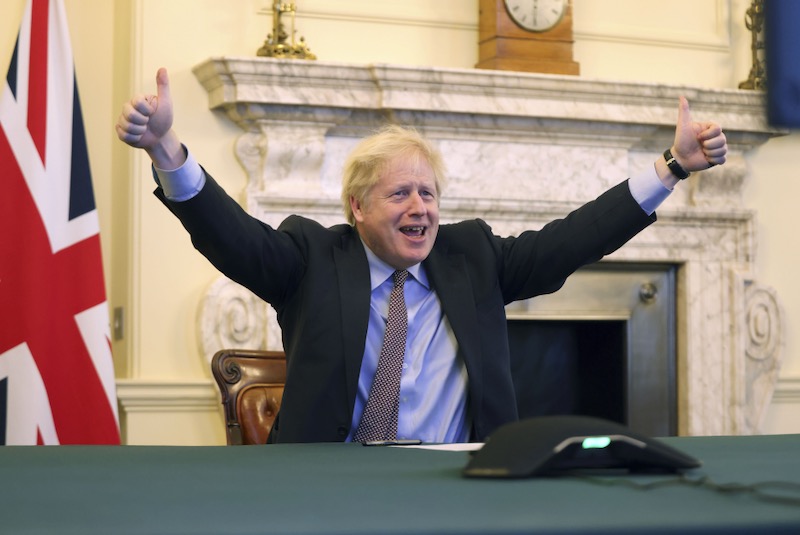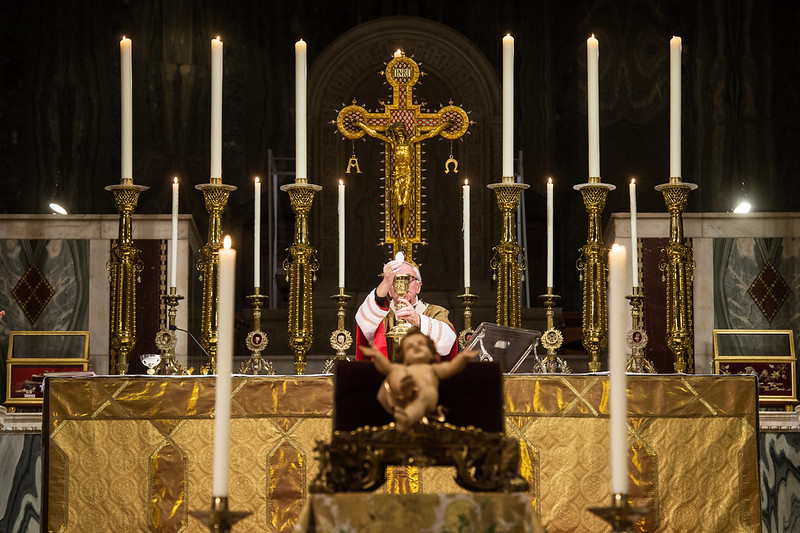Of all the many changes made in response to Covid-19 in our worship, one of the most significant (but perhaps least commented on) has been the ending of the distribution of communion “under both kinds”. I have always thought that the sharing of the cup with the whole congregation was a little miracle in the context of our individualistic, privatised culture. While many parishes have had the practice (until the pandemic – another little loss) of breaking a large-ish host into many pieces, it was only the drinking from a shared cup which really stood out against our contemporary expectations – of personal hygiene above all else in our deodorised and sanitised world. There was something primal, something decidedly pre-modern and visceral, about this daring act – even if we quietly whispered requests that people with cold sores or lesions in the mouth should not receive from the chalice.
Of course, sharing the cup was once the norm. Jesus mandated his disciples to “take and drink”. The action is first interpreted by St. Paul: “The blessing cup which we bless, is it not a sharing in the blood of Christ …?” (1 Cor 10.16) The early Church Rule known as The Didache instructs in Chapter 10 that “No one is to eat or drink of your Eucharist but those who have been baptised in the Name of the Lord,” implying that all those who have been baptised share in both actions.
Then, in the Middle Ages, that sharing of the cup was gradually withdrawn. In part, no doubt, that resulted from the gradual sacralisation of ordained ministry and the spread of a piety of “unworthiness”. As the act of reception of communion itself became something exceptional and rare for the laity, it was natural that their reception of the precious blood should also fall away, radically so from the twelfth century onwards. The new focus on adoration of the Host both at the elevation and in the monstrance away from the ritual action of the Eucharist doubtless also contributed, while scholastic theologians provided a justification after the event of the distribution of Holy Communion “sub una”: “the entire Christ” was connoted and conveyed by the bread as by the cup (and also, as would later be taught, by the Word, the ordained minister and the Eucharistic assembly).
As with later Protestant reformers, the attempt to reintroduce a sharing of the chalice was a focus of the attempts by Jan Hus to bring about ecclesiastical renewal in the Czech lands, resulting in his own execution in 1415 and the outlawing of Communion under both kinds at the Council of Constance that same year. While allowing, in principle, for a sharing of the cup, the Council of Trent effectively upheld the ban (and ensured that this dispute remained a key neuralgic point between Catholic and Protestant well into the twentieth century).
Only in 1963 was the ban rescinded, as the Second Vatican Council took heed of the work of the liturgical movement. But Communion under both kinds made its reappearance initially only as a concession for special occasions: for brides and grooms on their wedding days, for adult converts on their reception, for Religious at their profession and so on. In the UK, the general distribution of the chalice came a generation later. It was a request of 1980”s National Pastoral Congress; one that was viewed “sympathetically” by the Bishops’ Conference. Yet the text of their response, The Easter People, hums and haws about “practical difficulties” and their inability to give permission “indiscriminately” for the practice. In time, however, it happened where it happened and for many of us became the normal experience at both daily and Sunday mass.
More recently, a complaint from a Vatican office, that “some people, when not offered Holy Communion under both kinds, have expressed a sense of bewilderment, even thwarted entitlement, or a feeling that Holy Communion under one kind alone was, to some extent, deficient,” may have a doctrinal point, but it sounds petulant. A closer listening to that type of “bewilderment” would probably discover that the reason why Communion under both kinds was so highly prized (apart, perhaps, from the memory of having for so long been denied it) was precisely that in this way “the faithful are enabled to appreciate vividly the value of the sign” given in the sharing of the Eucharistic Elements.
Rather than it being about “receiving more grace”, it was about visualising our calling as Church. The phalanx of “extraordinary ministers of the Eucharist” coming forward from the assembly to share in the work of sharing the Eucharistic elements after the sign of peace (five at the principal Sunday masses in my own parish) expressed the fact that we are a ministering community, calling people into service and recognising their charisms in virtue of their baptismal calling. It was, in fact, a good example of lex orandi lex credendi, a way of saying what it means to be the Body of Christ.
Now, of a sudden, this visualisation of our calling has been taken away from us, not be theological controversy but by the contemporary understanding of how viruses spread and by the fear of contagion that has flowed from the pandemic. It is hard to believe that we shall ever be able to return to “the old ways” (pre-March, 2020) – and that is a source of sadness. There is to be no more sharing, either, (at least for the duration of the current emergency) of fractions torn from “Father”s host”. Father is now mandated “to eat it all himself”.
It will, literally, be sanitised fare that we offer to the people of God henceforth. Between the two showings to the congregation of the consecrated host (and the two challenges to recognise the presence of the Messiah that these connote) – “Behold the Lamb of God” and “The Body of Christ” – now lies a new ritual, of mask-donning and hand-cleansing. Only then do ciboria get uncovered (whereas once lids were removed before the consecration, as if to let the Holy Spirit in).
It is not that the new dispensation is short of ambiguities. For instance, when a majority of parishioners are watching safely from the comfort of their living rooms, they are self-evidently “in communion”, but are they “at mass”? Perhaps they are discovering in a new way that the home is indeed the domestic Church. Should I be scandalised that one retired parishioner regretted the fact that I moved daily mass back from its lockdown time of 8.30am to 9.30am when a congregation was once again permitted because “she did like watching mass while she was having breakfast,” or should I sing Alleluias that prayer was taking place at her kitchen table? Is this “watching” a return to old-school adoration before the ritually distanced Blessed Sacrament or is it not, rather, a new realisation of what “communion” means: not a holy moment in Church but a way of life and a sense of connection which distance cannot diminish nor locked doors deny?
In any case, this is not some Lefebvrist return to the discipline of the 1950s. (Communion on the tongue is also denied for epidemiological reasons.) There is certainly a danger that now we might come to see (and hence to believe) once more that “Father does everything” (as throughout the liturgical action of the mass – since altar-servers have also widely been withdrawn). Yet that danger is countered by another fact: “Father” is dying out, with the numbers of presbyters in freefall, with or without further Covid-19 deaths.
So perhaps the work of education that Communion under both kinds involved has been done. Our parishioners no longer come to communion full of anxieties about whether they are in “a state of grace”. They come in the struggle of this time to be fed and to receive the Lord – the one who has shared our viruses as he has also shared our fears. They come hungry – and they will demand to be fed in new ways, as we “run out of priests” in the next few years. The blessing cup that we bless is indeed a communion with the blood of Christ. And it becomes a symbol of a deeper thirst now that we can no longer all drink from it together.
Fr Rob Esdaile is parish priest of Our Lady of Lourdes, Thames Ditton, Surrey



 Loading ...
Loading ...
What do you think?
You can post as a subscriber user ...
User comments (0)